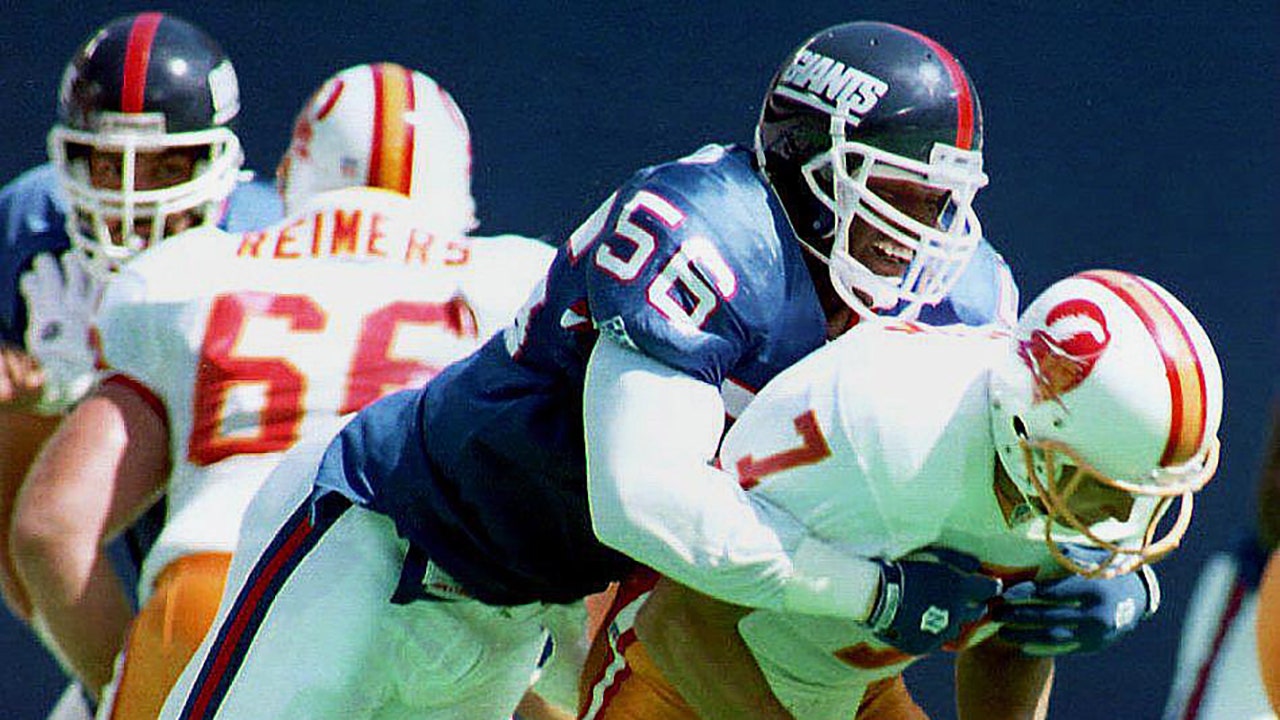Peter Williams, whose colorful paintings — sometimes humorous, sometimes disturbing, often both — reflected his own history, Black history and contemporary issues like police brutality and mass incarceration, died on Aug. 19 in Wilmington, Del. He was 69.
His wife, Elishka Vitanovska Mayer, said the cause was a heart attack.
Mr. Williams first exhibited as a teenager — he offered paintings for sale at the Woodstock music festival in 1969 — and was prolific for half a century. His output was vast and ever-changing. Some of his work was abstract, some figurative; some represented an interior monologue in which he sought to define his own identity; some spoke directly and bluntly to current events.
In recent years he garnered attention for several series inspired by high-profile killings of Black people by police officers — a group of paintings, heavy in blue tones, invoking the death of Michael Brown in Ferguson, Mo., in 2014; a triptych on George Floyd, killed in Minneapolis in 2020; and more.
Other recent series were devoted to mass incarceration and to Colin Kaepernick, the former N.F.L. quarterback and activist for social justice. A group of paintings made from 2015 to 2017, also inspired by the killings of Black people, featured a Black superhero named N-Word. Clad in yellow and red and using the American flag as a cape, he arrives at scenes — some gruesome, some almost comical — where Black people need help.
“I kind of relate him to the Black exploitation films of the ’70s,” Mr. Williams told Michigan Radio in 2016, explaining the idea behind his superhero. “Usually the hero of some of those films was a lowlife or a pimp or somebody who wasn’t quite so respected, but in the end he came through for his community.”
Another series, “Black Exodus” (2019-20), took the view that the planet had become unsalvageable thanks to the oppression and environmental degradation wrought by white culture — he depicted Afro-futurists escaping in old cars modified for space travel.
“At this point there was no point in going back to Africa,” he explained in a Zoom artist’s talk this year, “because there might not be a planet Earth.”
Some white people took offense at Mr. Williams’s imagery — he would sometimes depict police officers as pigs, for instance. Some Black people, too, found things in his paintings to dislike, among them his use of minstrels or the Aunt Jemima figure in certain works, which they thought perpetuated racial stereotypes.
“Williams has a talent for irritating the viewer, but he does it with style,” Joy Hakanson Colby wrote in 2006 in The Detroit News, when Mr. Williams had an exhibition in Ferndale, Mich. “One thing is certain: he’s never boring.”
Mr. Williams, who lived in Wilmington and was represented by the gallery Luis De Jesus Los Angeles, said his strong imagery reflected a personal search as much as any political statement.
“It surprises me that people are put off by my work,” he told The Detroit Free Press in 2002. “It’s not solely about race, but how I’m struggling to find my place in my family and community.”
Occasionally one of his paintings would include a Black male figure, sometimes naked, with an artificial leg. It was a representation of Mr. Williams himself.
In 1972, when he was a student at the University of New Mexico, he was a passenger in a speeding car that plunged over a 250-foot cliff near Albuquerque. He lost his right leg above the knee. His wife said he was in the hospital for seven months.
“His life,” she said by email, “was a lesson of self-discipline and will power.”
Peter Beresford Williams was born on March 18, 1952, in Suffern, N.Y., in Rockland County, to Goldburn Beresford Williams and Jacqueline Lucille (Banks) Williams. He grew up in the Hudson River village of Nyack, where his father was a real estate developer. Peter Williams later acknowledged that given the area’s relative racial diversity, it took him some time to understand the struggles faced by Black people elsewhere in the country.
He completed work on his bachelor’s degree in 1975 at the Minneapolis College of Art and Design, and received a master’s degree at the Maryland Institute College of Art in 1987. That year he took a job as an associate professor at Wayne State University in Detroit; that move, he said, helped deepen his understanding of urban racial tensions, giving him a close-up view of what he called “a harsh life of poverty and its racist infrastructure.”
Mr. Williams moved to the University of Delaware in 2004 and was to retire from there this month.
While at Wayne State he spent time in Spain, and many of his works show the influence of Goya and other Spanish masters, though he also drew on traditional African imagery and pop culture. The Free Press once described his work as “Salvador Dalí meets Walt Disney.”
The juxtapositions in his work could be jarring.
When Mr. Williams had an exhibition at the Visual Arts Center of New Jersey in Summit in 2007, Thomas Micchelli wrote in The Brooklyn Rail, “Williams’s depictions of Ronald McDonald, Mouseketeer caps and M&M’s, paired with blatantly racist and sometimes obscene imagery, feel like detritus scraped out of the tangled weeds of a brick-strewn vacant lot stinking of dead cats.”
Julie L. McGee curated that show and later became a colleague at the University of Delaware.
“Peter Williams was a fearless artist,” she said by email. “His combination of acerbic wit, social commentary and beauty allowed his work to speak to and transcend the momentary.”
In addition to his wife, Mr. Williams is survived by two stepsons, Paul and Daniel Mayer.
Mr. Williams’s work, whether whimsical or unsettling, demanded attention, Ms. McGee noted.
“Williams conveyed pain with exuberant color, pattern and geometry,” she said. “We dare not and cannot look away.”




